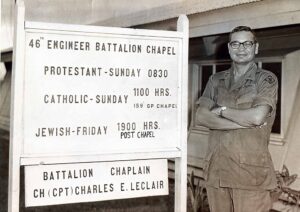
Ronald Reagan once humorously repeated a story often referred to as the “Texas Sharpshooter Fallacy.” The tale involves shooting a gun at a barn, then painting “bull’s-eyes” around the bullet holes. For the uninformed, the aftermath makes the shooter appear to be an expert marksman, when in reality he only managed to hit the side of a barn.
People who set goals paint the “bull’s-eye” first and then take aim until they become proficient. For example, Venus Williams, one of the best tennis players of all time, once said, “I don’t focus on what I’m up against. I focus on my goals, and I try to ignore the rest.”
Setting goals is a healthy way to measure progress; and, just as in other areas of life, goals can be effective tools to improve your spiritual disciplines. With that in mind, here are three significant goals for a pastor’s prayer life.
Prioritize your personal prayer life
Recent Lifeway research finds that three-fourths of American pastors want help with the consistency of their own prayer lives. In light of this need among the clergy, what are some goals a pastor can make that can potentially increase his effectiveness in prayer?
Jesus once advised us to pray for our “daily bread” (Matthew 6:11). It’s impossible to pray “give us this day our daily bread” if we’re not praying daily. The first step, therefore, in prioritizing our own prayer lives begins with a prayer of commitment like this: Lord, I will never miss my daily prayer time with you again for as long as I live.
Next, our prayer lives will never grow by accident. Pastors, just like every other believer, must intentionally commit to daily prayer. That commitment will probably require a definite time set on your calendar and a specific place known for its privacy and solitude so your personal prayer can flourish.
Some may be tempted to push back against the discipline of this approach; but, reflecting upon his own highly effective ministry, the late Billy Graham regretted not spending more time in prayer. He said, “Although I have much to be grateful for as I look back over my life, I also have many regrets. I have failed many times, and I would do many things differently….” In addition to spending more time in Bible study and with his family, the evangelist said, “I would also spend more time in spiritual nurture, seeking to grow closer to God so I could become more like Christ. I would spend more time in prayer, not just for myself but for others.” We are not too busy to pray, but we probably have some misplaced priorities. It’s important for the busy, prayerless pastor to remember that prioritizing prayer is actually prioritizing God.
Lead your congregation to be a praying church
Armin Gesswein once observed, “When Jesus ascended into heaven, all He left behind on earth was a prayer meeting.” When we consider that the early church, immediately after the ascension, went to the upper room for ten days of prayer (Acts 1:11-14), we recognize what Gesswein meant and how accurate he was.
Obviously, most churches schedule some times devoted to prayer in their Sunday gatherings, but there is a difference between praying at church and being a praying church. The early church traveled along the tracks of prayer. It has been said that “everything in the book of Acts happened at a prayer meeting, after a prayer meeting, or on the way to a prayer meeting.”
Once considered the anchor of the midweek gathering of the local church, the majority of churches now do not have prayer meetings. They are disappearing from congregational life. As pastors committed to prioritizing prayer, leading a praying church should be a key component of our ministerial vision. Abandoning the most fundamental practice of the early church seems like a doomed strategy.
A praying church is not defined, however, merely by a prayer meeting. Pastors should labor to build an effective ministry culture of prayer which includes receiving, managing, and praying over the ongoing prayer requests of the congregation and the community. Providing resources for the individual members of the church in order to help them become more proficient in prayer is an easy way to ramp up the passion for prayer within the lives of the people we are called to disciple.
If a pastor objects to this emphasis on building a praying church, it might help to remember a simple principle: Prayer doesn’t replace any other ministry of the church. Instead, prayer reinforces every other ministry of the church! As C. H. Spurgeon once advised pastors, “If a church is to be what it ought to be for the purposes of God, we must train it in the holy art of prayer.”
Collaborate with other churches to make yours’ the most prayed over city in America
Most Americans are pessimistic about the future of the country. As result, many evangelicals are praying for spiritual awakening and revival. For instance, Mark Rogers has written, “…the Bible teaches that God works in response to fervent, united prayer. Therefore, we should regularly meet together and pray for God to revive his people and save the lost. The history of real revival in America should encourage us to continue (or start) holding prayer meetings in our churches. It should also encourage pastors to gather with each other for united prayer. God can and does work in extraordinary ways, and the Bible teaches that God works in response to fervent, united prayer.
It isn’t easy to lead a city-wide prayer movement, but every effort put forth toward churches joining together is a worthwhile endeavor. If the praying pastors of a region can begin meeting together for prayer, the prayer movement in the city can begin taking shape from that collaboration. Then, pastors must be prayerful, persistent, and patient; because leading city movements takes time.
If pastors devote themselves to these three goals, they will likely experience the deepest spiritual devotion of their lifetimes and significantly improve the quality of life for their congregations and communities. Where it all ends cannot be explained until it is attempted, but how it begins is clear. Pastors must set goals for prayer.














